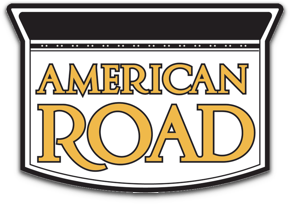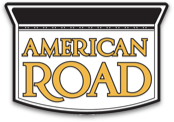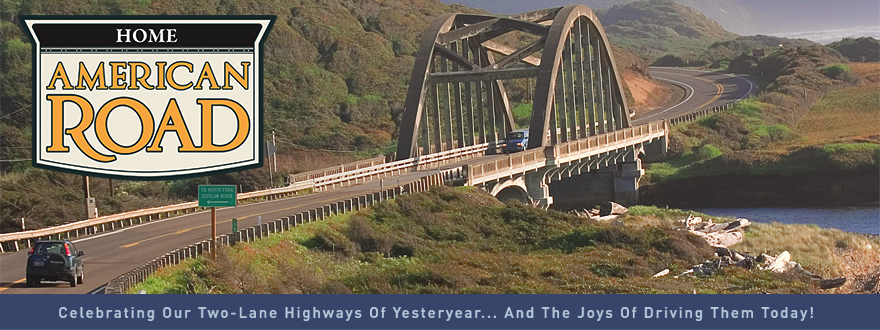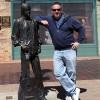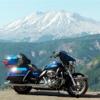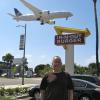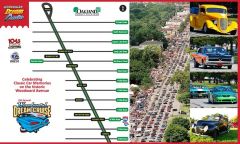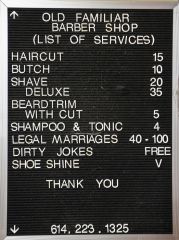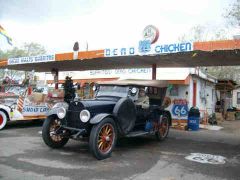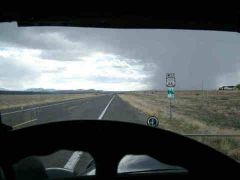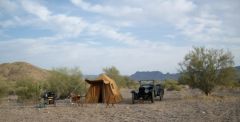Leaderboard
Popular Content
Showing content with the highest reputation since 12/17/2012 in all areas
-
Vigilante Trail In 1915, Yellowstone National Park was opened for automobile traffic, and in the first 10 days, 321 cars entered the park; 151 at the west entrance, 86 at the north entrance, 83 at the east entrance and 1 car entered at the south entrance. Vacationers who were traveling from the Pacific Northwest on the Yellowstone Trail could use a cut-off road southeast of Butte, Montana, which was the shortest and most direct route to the west entrance of the park. This cut-off road was also a shorter distance than the main route to Livingston and the north entrance to the park at Gardiner that was promoted by the YTA. To capitalize and to increase the traffic on this cut-off, the commercial interests of Butte organized a meeting on October 22, 1919, where 250 citizens from Silver Bow, Jefferson and Madison counties attended. The result of the meeting was the formation of the Vigilante Trail Association. The route was touted as a road, where almost every mile was the scene of a robbery, murder or hanging. The trail began about 20 miles southeast of Butte at the junction of the Yellowstone Trail, at Cedar Ridge, and ran through the towns of; Twin Bridges, Sheridan, Nevada City, Virginia City, Ennis and terminated at the west entrance to Yellowstone Park. The sign adopted for the route was a circle painted with red, white and blue stripes and included the mystic figures, "3-7-77." which was used by the Vigilantes to warn the criminals that their presence in the country was no longer desirable. Near this junction of the two trails was the reputed spot where Sacagawea was captured by a hostile tribe and had to be rescued from her captors. Years later, she guided Lewis and Clark up the Jefferson River and they passed near the spot where she had been taken. The trail ran on the old Ruby Valley Road through the historic gold mining district, of Alder Gulch and Virginia City. Virginia City is located 7 miles west of Alder Gulch and is one of the oldest settlements in the West. In the 1860s, it was the temporary home for thousands of placer miners. This was a lawless place, where robbery and murder were the order of the day. The Road Agents, as the organized desperadoes were called, had control of the sheriff and the justice of the peace, and the good citizens were left without any protection for their rights, their property or their lives. It all began with the discovery of gold on Grasshopper Creek near Bannack and at Alder Gulch near Virginia City in the spring of 1862. Word of the discovery reached the masses by the summer of 1863, which triggered a stampede of thousands of prospectors rushing to the region. Among the later arrivals were desperadoes and outlaws, who scenting the prey from afar, flew like vultures to the carcass. From the west came a gang of thieves who would become the "Road Agents" and would terrorize and rob people who were traveling between Virginia City and Bannack. Between these two mining camps, a correspondence was kept and the roads throughout the territory were under constant surveillance of the agents. They devised a system that would mark the horses, men and coaches that were worthy of robbing, and that information would be passed to the highwaymen in time before their victims could escape. The road agents, who were also known as the “Innocents,” levied toll on every traveler by robbing and murdering with the greatest impunity. At every turn from Bannack to Virginia City, they held up stages, pack trains and individual miners, killing those who resisted, and beat those who had nothing. So complete their sway, so stern their rule, more than 200 lives were lost along that road. Sheriff Henry Plummer was the chief and everyone knew it. He and some of his men eventually were hung at Bannack in 1864. In 1870, the first chief justice of Montana Territory Hezekiah L. Hosmer had said; "The attraction brought those who came to work and those who came to profit off the labor of others. Had the convicts been set free by the approach of Napoleon, on the condition they burn Moscow, and had instead been thrown upon these new settlements, it could not have been worse than it was with the crowd that entered and took control of Bannack and Virginia City in 1862 and 1863.” If a man brought suit to recover a stolen horse, he would be apt to meet in court with a band of dishonest witnesses who would swear that the contested property belonged to the thief. Thus the man was not only robbed of his property but had to pay the expenses of the suit as well. Gambling and wild women were the main features of every mining camp and these activities were another place for the miners to lose their money. Ladies of the evening plied their trade in the open daylight and the brothels were the lures where many a man was entrapped for robbery and murder. Dance houses sprang up and everyone who visited these establishments were in some way relieved of the money they brought with them. Many good men who dared to show any signs of disgust were shot down by a member of the gang at the first opportunity. The headquarters of these desperadoes was at the Daley ranch otherwise known as the “Robbers’ Roost.” The old inn was located beside the road 4 miles southeast of Sheridan. Of all the villains and criminals who rested at the roost, the most renowned and despised of them all was George Ives, a ruthless servant of the devil. This state of affairs could not go on forever. All of the friends of justice were relentlessly, threatened and watched by the agents. Things began to change when Virginia City and Nevada City formed a Vigilante Committee. The committee was approved and supported by all those who had anything to lose, or who thought their lives were at risk. Merchants, miners, mechanics and professional men alike joined in the movement until, within an incredibly short space of time, the Road Agents were in a state of constant fear George Ives was the first victim of the newly formed vigilante committee. They captured him not far from Robbers’ Roost. Ives was transported to Nevada City where they put him on trial. Ives begged to be taken to Virginia City claiming that the populace of the lower town must, be prejudiced against him, for he had once killed a dog that had bit him while he was there. He was loaded with logging chains, hauled into court and on December 21, 1863, he was hanged. His companions in crime, Red Yager and G. W Brown, the bartender at the Robbers' Roost, were rounded up and hanged within the next two weeks. The Vigilantes, now warmed up to their work, roamed up and down the trail, seeking desperadoes to devour. They traveled south to Bannack where they hanged Sheriff Plummer and his two deputies, Ray and Stilson. They then rode over the pass to Deer Lodge and down to Hellgate, and on their way they hanged a half dozen assorted thieves and highwaymen. In all they executed extreme justice on 32 desperadoes. They left one poor soul dangling from a tree that had the governor’s pardon. They hanged him with all of the official seals and ribbons sticking out of his pants pockets. The Vigilantes soon rid Montana of the Road Agents and were the saviors of Montana. On July 9, 1922, Frank Bell had just returned from a trip to Yellowstone Park and reported that the Vigilante Trail is the best road leading to the park. "The Vigilante Trail is a boulevard all the way," said Mr. Bell "It's no trick at all to leave Butte early in the morning and make the west Yellowstone entrance to the park the same day. That's a jump of about 200 miles, but with the excellent roads it is not a tiresome drive.” “I am sorry to state that the very opposite is true of the Yellowstone Trail. This transcontinental road is in very bad condition, and its main artery, the section on which the Yellowstone Trail association makes its effort to concentrate all travel from Livingston to Gardiner is a disgrace to any trail association and to the counties which are supposed to take care of the trail.” “The road between Livingston and Gardiner is treacherously rough, badly cared for and in many stretches should be resurveyed before it can properly be designated as a road inviting the travel of all the country.” The day Mr. Bell left Butte, he met a tourist who wanted to go to Yellowstone Park via the Yellowstone Trail through Bozeman and Livingston. He had by mistake turned onto the cutoff road for the Vigilante Trail at the top of Cedar ridge. Bell told him he could get to the park that way and it was shorter, but he did not know the condition of the road. They both traveled all the way to West Yellowstone and before they got there, the tourist thanked Bell for putting him on the best road he had traveled for many miles. Today a trip from Butte to West Yellowstone on the modern highway will take you about 2 hours and 24 minutes and a trip from Butte to Gardiner will take you about 2 hours and 28 minutes, a 4 minute difference. Google Map https://www.google.com/maps/d/edit?mid=16FNHbdE1MEM2B_P9_ZevlrGu0mIsbcOj&usp=sharing2 points
-
Midway Park was once a campground which included an old Signal gas station. The park was located on top of Easton Hill about 12 miles east of Snoqualmie Pass and about 5 miles west of Easton. This is where the old 1915 highway diverged from the 1927 highway. Once automobiles could make it over the pass without refueling, the need for this gas station faded. It is unknown when it was first established, although it is said that the building was still there in 1952. Happy Trails Curt2 points
-
Hi Becky, No problem on the delay…… It is kind of you to reply!! I have plenty to keep me out of trouble in any event. BTW, our old friend Denny Gibson was in the Puget Sound area a couple of weeks ago, and we had a great time recalling our Forum adventures. I’ll keep an eye out for any replies to my Forum inquiry. I celebrated my 81st in mid July and I want to tell you that American Road Magazine (I was a charter subscriber, pre publication!), you folks, and the many friends I made over my 14 years (so far) on the Forum were life altering. Truly. I have never tried to count the many many road adventures prompted and encouraged by American Road. It must run into the hundreds, a rich and treasured part of my golden years. I have more in the future, but I owe the Repps enormous gratitude now. My road trips have engaged, entertained, educated, and enlarged my perspectives. I have met and gotten to know a wide range of my countrymen and country women, in towns and villages spread across America. Images and appreciations that began in my grammar school readers came to life as I met cowboys, small town mayors, loggers and fishermen, college professors and waitresses and shared their pride in their community and an interest in what was down the road. I have spent many nights in historic hotels, learned the real history of real people, taken tens of thousands of photographs (some enjoyed by others), written volumes (some that has been read), met wonderful people, and much much more…...thanks to a post card I got years ago about a new magazine that would deal with the Two Lane Roads of America. My great appreciation goes to you folks for many great years of wonderful road trips, with more to come! David2 points
-
Becky, Thanks for the encouragement! I have nothing against Facebook, but you are absolutely correct. I can certainly contribute to the Forum. As you might suppose I have tons of road trip experiences over a 60 year period. I would enjoy putting a few stories together with photos. But by and large they will not be too current. I’ll give a shot, and if it appeals. Here are a couple of ideas. Any preferences? I have a stack of Ford Times magazine from the late 40’s. This was the peak of post WWII road travel, when we could again get on the road. I could probably pull something together from them. We took a road trip a few weeks ago to a fishing port on the Washington coast….boats, lighthouse, etc. As you know I have tons of road maps, Automobile Blue Books, Hobbs Grade and Surface Guide, from 100 years ago, etc etc. I can always do a piece on something about almost anywhere in America in 1917 or 1920. I am probably the “world expert” on the National Parks Highway, and no slouch on the Yellowstone Trail and the Yellowstone Highway. Anyway, that is just a sample. If something might sync with upcoming issues, I’d give it a try as well. Dave Keep the Show on the Road.2 points
-
From our ridgeroute.org website - On Monday, June 10, Michael Ballard (myself), Harrison Scott, Dave Omieczynski, and Richard Valot had a meeting with representatives from the Angeles National Forest. They included Jerry Perez – Forest Supervisor, Justin Seastrand – Environmental Coordinator, Ricardo Lopez – Road Engineer, and Jamahl Butler – District Ranger. Our meeting, which was held on the Ridge Route near the southern end, was to discuss a range of topics regarding the road. We initially met at the Ridge Route and Templin Highway where we made introductions and briefly went over the meeting details. From there, I led the group with my sportbike up the road to the southern gate. At that point, we discussed the land ownership problems and the 2010 paving, which we believe will help us with our goal of getting the road reopened. After our discussion, they opened the gate and I led the group on a tour of the Ridge Route from the southern gate to Reservoir Summit. The initial plan, however, was to only go about four miles north to see the recently reconstructed section of road. Each stop, the USFS people decided to go a bit further. We didn’t mind this at all! Along the way, we made stops at some of the sections of the roadway that had been repaired as well as some of the historic sites along the road, such as the National Forest Inn site. At each major stop, Scotty brought out his books and showed photos of the sites. Once we got to Reservoir Summit, we had another discussion regarding the state of the roadway. Overall, it was in very good shape with only a few areas needing more immediate attention. Many sections had been resurfaced and we did make it clear that we didn’t want to see a wholesale repaving of the roadway for the sake of preservation. They seemed to understand this. After our discussion and hike to the reservoir, we all headed back to the southern gate to finalize our meeting. The meeting was productive and positive. There is still a lot of work to be done, but they were willing to help and to work with us. Instead of a Memorandum of Understanding, we may be entering into a Volunteer Agreement regarding cleaning drains and such along the roadway. They also stated they would do additional research regarding the land ownership issue at the southern end of the roadway. In regards to opening the roadway, there is still no estimate on when it will reopen. Another concern is roadway maintenance, which we may be able to help defray with volunteer effort. There are still additional issues that need to be addressed but we at least have a better understanding of what the Forest Service sees as the problems. One of them, overall condition of the roadway and ability for vehicles to travel safely, I tried to prove by using my sportbike. If I can go on the roadway using that vehicle, most everyone should be able to pass over it safely as well. Only time will tell if this meeting was truly successful, but I believe it was. I will give additional updates when we hear back from the USFS in the near future.2 points
-
I would like to start a thread that captures those buildings along the roadside whose days of glory are in the past and now wait for time to take it's ultimate toll. During my road trip travels I am always on the lookout for those buildings that were once part of the road trip experience but are now likely relegated to a distant memories of road trips past. Whenever I pass through a small town, or along what was once the major thoroughfare through an area that is now bypassed by the Interstate, I always keep an eye out for that former gas station, diner, or motel. Sometimes they have been repurposed to fulfill another roll, others are in a state of suspended animation, but many times they are abandoned likely to never be a stop along the highway again. In the 15 or so years that I have taken an active interest in the history of the American road I have had the opportunity to visit sites multiple times seperated by a few years and have witnessed the accelerated decay of some of these buildings, some are even gone completely. The "Kamp"ground office at Two Guns is an example that comes to mind. Each time I pass through that area east of Flagstaff I pull off the Interstate and take a look. Each time there is more grafitti, less of the buildings siding intact, and more of the interior exposed to the elements. I'm sure there are many more examples out there and I hope you will share some of what you've seen. https://fineartamerica.com/featured/painted-desert-trading-post-at-sunset-rick-pisio.html I'll start with an iconic building that I have attempted to reach 3 times, once successfully, but don't expect to see the next time I pass through Arizona. The Painted Desert Trading Post stands in the middle of nowhere, east of Painted Desert National Park, and nearly inaccessible. The section of Route 66 that this building sits on was bypassed sometime in the 50's and like many Route 66 buildings that lost traffic to the Interstate it eventually was abandoned. It has survived the 70 or so years since it last saw customers only because of its remoteness. Time and the elements have taken their toll however. When I was last there the east side of the building has started to slip, the stucco was flaking off, parts of the walls are gone, massive cracks are present in the foundation, and you can see the sky through the roof. There may be hope for the old gal yet. As I was writing the draft for this post I was looking online for some information and came across this article. It would appear that a group has purchased the land and the building with an eye to preserving the structure. I wish them the best of luck! http://www.route66news.com/2018/04/08/group-buys-painted-desert-trading-post/ Roadhound2 points
-
I read the playlist for your show. Glad to see you are back on the air. I know your Dad passed recently. Speaking as the father of a son about your age who struggles with self sufficiency and health issues, your Dad would be proud you keep on truckin'. I have a question. How does a radio station get permission to play music artists? Do they have to pay royalties....or something? Old age is reducing my road trips so I am not posting as often here, but I was on the road a few weeks ago, so maybe I will put it on the Forum. We traveled old auto and stage coach roads in Oregon. Great fun. Dave Keep the Show on the Road2 points
-
2 points
-
Great to see you both here! Dave, where's that post card? And, Cort, looking forward to the tribute. 🙂1 point
-
Hi Cort, Good to see you in the Forum! Your note prompted me to think about sharing a fascinating real photo post card. But I will have to do it tomorrow.....how is that for a tease?!!!! KTSOTR1 point
-
This is a reply to a friend here, but it may turn into a thread of interest to all. Hutch, Are you still with the red Jeep? Yes, forums have declined in popularity in the face of alternatives like Facebook. I operated a Forum for one of our major auto trails for a while, but when I stopped running it, it was abandoned. No fault, it was mainly used by serious roadies, and that isn’t a huge number. It sounds like you are headed for some of the most spectacular country in America. It has been a couple of years now since I was in Moab, Bluff, Monument Valley. The Arches, Zion, etc etc. I was meeting up with the son and daughter of pioneer trail blazer, Dolf Andrus, who blazed the Monumental Highway in that area. I think if you search the Forum for Monumental Highway or Andrus you may find some potentially rewarding stuff I posted a few years ago to enrich your trip. I threw in below a few of my “scenics” of the area mostly 50 years old, with a couple of new ones. Post some of yours if you have time. I would love to see them. If you intend to spend a little time, I can probably guide you to some interesting sites and road stories in and around Bluff and Monument Valley. And we should share that on the Forum. I am now in my early 80’s and my wife is limited in her travel ability, so I am mostly enjoying my 70 years of slides, movies, videos, stories, maps, and terrific road adventures gathered over the years. We may get another RV she can be comfortable in, but as you would appreciate, it ain’t like a Jeep! Oh, I saw Denny Gibson the other day. He is still the premier roadie!! Dave Keep the Show on the Road!1 point
-
Just south of Madera, 1.75 miles south of Ave 12, and 2.1 miles north of Ave 9 (or more specifically at 06-MAD-99-05.7), there lies a pine tree and a palm tree in the median of Highway 99. It has been there since the 1920’s and marks the former halfway point in California. The Palm Tree, a Canary Island Date Palm, represents Southern California and the Pine Tree, a Deodor Cedar, represents Northern California. In 2005, the pine tree fell down but was replaced by Caltrans in 2007 as this is a somewhat historic marker. We, the Historic Highway 99 Association of California, intend to have signs placed in both directions at this location to mark the historic site. While it might not exactly be the “halfway” point in California, it is close enough and has been there since the 1920’s. We are looking to work with local agencies such as the County of Madera, Caltrans District 6, City of Madera, and others to gain support and assistance with this effort. We already have a design for the sign and cost estimates for its fabrication. If you would like to be involved in this project (03-MAD21002), let us know! We can use help either through donations of labor or money. Any donations are likely tax-deductible as we are a 501c3 organization.1 point
-
I wanted to thank the staff of American Road Magazine and Becky Repp for the inclusion of the Historic Highway 99 Association of California in the most recent American Road magazine. We are small, but we are growing. We have members now in CA, OR, WA, and BC. We are working on getting historic route signage up in various cities. We also host monthly meetings with presentations on various topics about US 99. In August, we had a representative from Mentryville, an old oil boom town just west of Santa Clarita and the birthplace of California oil, talk about its history. Things are moving, even if slowly. There is much to do. Thank you again for including us! We really appreciate it and intend to return the favor.1 point
-
Hi everyone. II hope you are doing well. apologize for being MIA. We've been dealing with flooding and short staffing due to Covid issues, etc. I was just taking a quick peek on the Forum and saw this string. Dave, I apologize for not responding to your message: Here are a couple of ideas. Any preferences? I have a stack of Ford Times magazine from the late 40’s. This was the peak of post WWII road travel, when we could again get on the road. I could probably pull something together from them. We took a road trip a few weeks ago to a fishing port on the Washington coast….boats, lighthouse, etc. As you know I have tons of road maps, Automobile Blue Books, Hobbs Grade and Surface Guide, from 100 years ago, etc etc. I can always do a piece on something about almost anywhere in America in 1917 or 1920. I am probably the “world expert” on the National Parks Highway, and no slouch on the Yellowstone Trail and the Yellowstone Highway. Anyway, that is just a sample. If something might sync with upcoming issues, I’d give it a try as well. Truthfully Dave, I would be interested in any and all of the subjects. But I'd like to hear what everyone else wants to read about. Preferences anyone?1 point
-
Glad to see there is still life on here! Been many years since I posted anything. I was just looking at the National Road U.S. 40 Forum and the old brick road road in Norwich, Ohio. In 2017 our Ohio/W Penn Region of the Dodge Brothers Club hosted a meet in Cambridge with side trips. One trip was to go across the brick road in Norwich with our cars. I have a 2.5 mb video of a 1926 Dodge Brothers touring car driving most of the length of that section. Les1 point
-
On March 24, 2021, we finally posted new signs in Calexico, California. The original Historic Route signs, posted about 1995, were badly faded and in need of a refresh. In cooperation with the City of Calexico, we replaced the old signs with new larger signs. We plan to replace all the signs in Calexico in the near future. This was our first project as well and a big break for the Historic Highway 99 Association of California. https://historic99.org/calexico-signs-posted/1 point
-
For those not familiar, the Ridge Route was realigned quite a bit in the mid-1920's. In the process, many sections of wooden railing and concrete curbing were lost. Still, the road did need it. One of the more "famous" realignments was known as the "Callahan Line Change" where multiple reversing curves were replaced in a somewhat dramatic fashion with one long curve. As it happens, this section was yet again realigned when I-5 was built, almost completely obliterating any trace of it. Almost, that is. https://socalregion.com/highways/ridge_route/rrt003/1 point
-
Way back in 2007, when this forum was humming with activity, one of my contributions that year was a journey that I took with my son and my father following the Transcontinental Railroad east and the Lincoln Highway back west. The first of five entries from that journey can be found here. On the second day of that trip we found ourselves at the Golden Spike National Historic Site with a couple of replica locomotives out on the tracks. Now, in 2019, the US Postal Service has decided to celebrate the 12 year anniversary of that epic adventure by issuing stamps commemorating our visit to that site, or maybe it's the 150th anniversary of the completion of the Transcontinental Railroad, let's not quibble about details. When we stopped at the Golden Spike National Historic Site, and I took the photo you see below, little did I know that twelve years later that photo would be licensed by the USPS and used as a reference image by artist Michael J. Deas to create one of the stamps commemorating the 150th anniversary of the completion of the Transcontinental Railroad. That one photo more than paid for that entire roadtrip plus I can now claim to be the answer to some very obscure philatelic trivia. The date of the 150th Anniversary of the completion of the Transcontinental Railroad is May 10th, 2019, and a celebration is planned at the Golden Spike National Historic Site, not that I needed an excuse for another road trip. Roadhound http://rick-pisio.pixels.com http://www.rwphotos.com1 point
-
On a recent trip out to Phoenix I found that Arizona is posting signs along old US 80, at least where it coincides with current State highways. I found two shields, one in each direction, on State 85 near Buckeye. Apparently, it is also signed on State 77 (former US 80 from Florence Junction to near Tucson). Anyone else seen any new shields?1 point
-
Cort, Congrats on your show! Dave, please do share the details of your trip on old auto and stagecoach roads in Oregon. Fun! Best, Becky1 point
-
The Service Bay Need emergency repairs while on that road trip? Broken fan belt? Leaking radiator? Replace a tire? Those services where once available at most gas stations along your route. The service bay was where the work would take place and if it required the mechanic to get to the vehicles underside then there was the hydraulic lift in the center of the shop to raise the vehicle. Today, a stop for fuel requires you to pump your own gas and emergency repairs, well, good luck with that. The service bay pictured below was once part of a Sinclair station in James Town, Wyoming. Roadhound http://rick-pisio.pixels.com http://www.rwphotos.com1 point
-
MGA707, Gees, I feel like I am sitting at the foot of the master!! All my knowledge comes from memory, and that ain't good! My recollections of those days are as a school kid. I didn't "hit the road" until I had a 1948 straight eight Pontiac in the 50s. I used to drag race it on 1st Street in San Jose. I was the king of the one block race. Ford V8's would take me in two blocks, but the signals were timed so if you went faster than the speed limit, you always hit a red signal at the next intersection. The Pontiac had enough torque and low gear to pull tree stumps, so it was always ahead in one block. The good old days.....:) Dave Keep the Show on the Road.1 point
-
Recently, I was driving the Lincoln Highway through Echo Canyon and spotted an unusual sight just to the south of the roadbed. Toward the eastern end of the canyon, down a 10 foot embankment, and across a small creek was the remains of what looked to me like a 1940's era coupe. The paint was faded, there were bullet holes in the door, and it was half submerged in the soil. As I hiked down to get a closer look a number of questions popped into my head. What year, make, and model is it? How did it get there? How long has it been there? Was it the sight of a shootout between police and bank robbers? The water in the creek was to wide for me to leap across and short of ripping out a fencepost I couldn't find a suitable material to make a bridge, so, I was left to making my observations from a distance. I was able to see that all the glass was missing with the possible exception of a tail light on the drivers side. It didn't look like the steering wheel or much of the interior was intact but it was difficult to tell with it being submerged in the soil the way it was. I did observe a small piece of the rear bumper sticking up out of the earth which leads me to believe that the frame is intact. If anybody knows the story of this relic I would be interested in hearing about it. Roadhound http:\\rick-pisio.pixels.com http:\\www.rwphotos.com1 point
-
Outstanding! I thought it was a Plymouth or a Dodge but the only good view I could find was of a Dodge and the forward rake of the doorpost didn't look right. Now that we know what it is we have to figure out how it got there. I heard a story told by an old timer sitting in the corner of the bar in Ogden that may answer that very question. The Legend of Elmer Lockwood He grew up on a farm in Oklahoma during the depression, the 6th of seven children. He served his country during the second world war but wasn't a good soldier. His Army buddies call him "Screwball." He set the record for hours of KP duty in his division. When he got back he was unable to hold a job and suffered today from what we would call PTSD. It was raining hard on the day before Christmas Eve in 1949 when he got in his '46 Plymouth 2 door Deluxe Sedan and headed up Weber Canyon to the small town of Morgan to rob a bank. During his escape he lost his bearings and got turned around in the hard blowing snow . Instead of heading west to the flat, open, land surrounding the Great Salt Lake he headed east, further into Weber Canyon. That limited him to 2 options; head south on the old Lincoln Highway towards Coalville and back towards the Great Salt Lake or head east, towards Evanston and wide open Wyoming. He figured they would be waiting for him in Coalville and hoped that the Wyoming State Troopers hadn't been alerted yet. East it was. As he sped through the town of Echo he could see 2, maybe 3, Utah Troopers in his rear view mirror about a half mile back. He turned east and headed up Echo Canyon Road, right foot pushing as hard as it could into floor trying to get all he could out of the 217 cubic inches under the hood. Would the 95HP be enough? The Troopers were gaining on him. Six miles into Echo Canyon, on a long straight stretch he lost traction on a patch of ice and felt the the rear end skid out the right. He slid sideways off the road and down the embankment finally coming to a stop on the bank of Echo Creek. He tried to start the motor but it wouldn't turn over. Trying to make one last stand he grabbed his handgun, pulled on the door handle, but before he could get out of the car the Troopers filled the door of the Plymouth with holes. The police left the car where it landed and in time the creek bed built up around it leaving just enough exposed to frustrate anyone who tried to figure out what it was and how it got there. The locals say that on a snowy winters night, on the eve of Christmas Eve, if you stand beside the car you can hear the ghost of Elmer Lockwood tell you "it's a 1946 Plymouth 2 door Deluxe Sedan."1 point
-
Ah, my boys, me thinks 1946 Plymouth 2 door Deluxe. You should have been there...... when they came out! The rear tail light distinct rectangular with chrome trim), elongated rear side window, and fastback line are keys.for me. Thanks Roadhound and MGA for the great ride! Dave Keep the Show on the Road!!1 point
-
The 'Reader's Digest' short version is that commercial radio stations have contracts with the two main music publishing organizations, BMI (Broadcast Music International) and ASCAP (American Society of Composers, Authors, and Publishers) whom they pay. The two publishing organizations then distribute songwriting royalties to their respective songwriters.1 point
-
Michael, I appreciate your geological comments. Understanding the roadside geology is up there with understanding and appreciating the roadside history and architecture. Looking at the area you note in Google Earth, it looks like the road from the NW (going SE) follows along the edge of the flow, climb it and then crosses the bridge. An older road seems to climb the flow just a little bit to the west. In street view you can see the edge of the flow readily.....but all this is conjecture as I have little to no expertise. Dave Keep the Show on the Road1 point
-
Terrific photos!! I recall visiting there in about 2007. In fact i think I posted something about it way back then. It is good to see it is getting good care. Glad the Vibe is doing well. My first car (in 1956) was a Pontiac, a big 1948 straight 8 sedan. You could pull stumps with the torque that car had. . It is a shame they have left the scene. They made some excellent cars. And ahhhh the Miata. I owned one of the first three in Washington. I drove from Olympia to Spokane to claim it. I actually cried when I sold it. It was my second favorite car, after the 1958 MGA I had in college. You must be doing some recent road tripping. Great reports! Dave Keep the Show on the Road!1 point
-
Grain elevators are dangerous places. They too often explode, or the unfortunate worker smothers in the interior storage bins. In the same year the 1916 Union Grain Elevator at Boyd was built, 22 people died because they could not outrun the flames as grain dust exploded at an elevator in the east, at Baltimore. Boyd sits just off The Dalles California Highway (US 197) on the old stage coach and freight road between the Columbia River and the gold fields at John Day. It was the main road between California and the Columbia River Highway until the Oregon highway folks chose a route further west through Dufur in 1923. Grain was lifted from horse drawn wagons up a long conveyor belt to the top of the elevator (note the structure on top the elevator) and dropped by chutes into silos or bins below. The grain was stored 10 or more feet deep. A misstep and a worker could fall into a bin, and as in quicksand quickly sink into the wheat and smother. As recently as last year 10 workers in US grain elevators met their fate in that manner. The Union elevator was built by the farmers in the Boyd area to save them the 12 mile wagon haul to The Dalles on the Columbia River. The Great Southern Railroad built a siding to the elevator, and grain cars could be loaded through a big chute that resembled an elephant's tusk. No record exists of an explosion or suffocation death at the elevator. The pioneer barn at Boyd collapsed last winter. I photographed the barn last June. The cupola that provided airflow to the hay loft was still standing proudly on the roof then. The loft door was a bit askew, but you could still imagine a loaded hay wagon beneath and a farmer throwing pitchfork loads of hay from the wagon up through the door. The barn escaped loft fires generated by oxidation of hay too wet to store (thus the cupola), and the ravages of 100 years, only to succumb to last winter's heavy snow load on a weakened roof. A sad loss. https://youtu.be/1Xx6RyZ6odw1 point
-
Hi Cort, I read your tribute to your father. I'm sure he would have been pleased. Dave1 point
-
Neon Arrows Of all the roadside architecture probably nothing beckoned to the traveler more than well lit neon signage. The warmth and glow of the neon could make even the dodgiest of places look decent. Add in a theme that appealed to the restless kids in the back seat, with some animation, and you had a double threat. The Arrow Motel along State Route 68 in Espanola, New Mexico may have had that appeal. A close look at the neon tubes would indicate that they were synchronized to turn on and off to give the appearance of the bow string being released and a neon arrow flying through the air. After sitting vacant since 2000 the Arrow Motel was demolished on Jan 3, 2017 after a prolonged legal battle between the city of Espanola and the owners of the property who had refused to clean it up. The sign reportedly has been relocated to the Glorieta Station redevelopment in Albuquerque, NM. Roadhound http://rick-pisio.pixels.com http://www.rwphotos.com1 point
-
The building just behind Wilkerson's in the photo was a small building with "Figural Bottles" painted on the window. I'm not sure what a "figural bottle" is but the building itself looks lie it may have been the office of a gas station at one point in time. I haven't found much information on it. There may have been a single wide trailer behind the gas station that is peeking into the right side of the below picture. Since we've already explored most of what I saw in Newkirk there was one other building that caught my attention. A little further east on the main road was a building that looked like an early motel with small rooms next to garage ports. I haven't been able to find much information about this building either but it looks to be from an early era of automobile travel. I didn't explore much more of Newkirk other than what was easily accessible from the old highway. There are still residents in Newkirk and I have read that the crime along that stretch of the Interstate is high, as high as 1 in 7 vehicles passing through are involved in illegal activity. The residents there have a reputation of preferring to shoot first and ask questions later so I kept to the main road, quickly took my photos, and moved along. To orient ourselves with layout of Newkirk I present the screen grab from Google Earth: At the top left corner is the UP railroad tracks running on the north side of town The road running up the left side is NM 129 The brown line is the 1936-1964 path of Route 66 The red line is the 1926-1936 path of Route 66 Just below the bottom of the image, south of town is I-40 Roadhound http:\\rick-pisio.pixels.com http:\\www.rwphotos.com1 point
-
Rincon Cafe Driving north out of the Salinas Valley town of Gonzales on the old alignment of US 101, Alta St. as the locals call it, you are quickly surrounded by lettuce and spinach fields. A mile north of town, just before the road turns into an overpass and on ramps, sits the boarded up structure of the Rincon Cafe. The northern end of the building looks to have once been a single bay garage while out front was where the gas pumps sat. The barely visible outline of the letters spelling "Norwalk Service" above the gas station's front door are a clue to the buildings past but still don't reveal what brand of gasoline was once sold there. The cafe on the southern end of the building looks like the type of place John Steinbeck might have stopped at for bacon, eggs and a cup of coffee. Roadhound http://rick-pisio.pixels.com1 point
-
Greetings all. I wanted to share a rather unpleasant experience I had recently while traveling along an old alignment of US 80 in Arizona. My husband and I were traveling between San Diego, CA and Phoenix, AZ on the Saturday before Christmas. As we had more available time, I wanted to finally take the original route of US 80 through Dome Valley, also stopping by the McPhaul Bridge north of Yuma, AZ. I had done a bit of research before we left, as the old road through Dome Valley had many turns. After visiting the McPhaul Bridge, we headed north on US 95 to the turnoff for Dome Valley. After we made the turn, we found that the old road had signage for a detour for I-8 and directions to "Old US 80" and I-8, which made travel a bit easier. With only one exception, all the turns were well marked with these signs. Near the first big turn, we noticed a border patrol car parked alongside the road, pointed toward traffic. I didn't think too much of it, other than was disappointed to see them. Not long after this, however, I saw they had passed the car that was behind us and was getting closer to us. Again, didn't think too much of this but was a bit concerned. I hadn't been speeding and I had been coming to a complete stop at the stop signs, despite the lack of limit lines. I would have anyway. Now, we proceeded down old US 80 south toward the "newer" alignment of US 80 which follows I-8 a lot closer. Still, the border patrol car was following us at varying distances. We saw another border patrol vehicle just north of the Old US 80 turn near Wellton. At the junction, we turned left, to head down old US 80 toward Wellton and Mohawk. Well, that is when things turned into a problem. After we turned, the border patrol vehicle that had been following us pulled us over. After we stopped, we asked why we were being stopped. They first asked us if we were familiar with Dome Valley. They also asked us where we were going to and where we were going from. They asked why we went a different way and evaded a "Federal Checkpoint", calling it that instead of border patrol checkpoint. They had said the route was "popular with smugglers". They had also taken our driver licenses to, well, we weren't sure what. They told us they were doing a background check on us. They checked their records and asked why we took a different route because, according to their records, we normally took I-8. Remember that when you pass those cameras alongside the roadway. They are indeed tracking your movements. I suspected before but this was proof. I told them we were following old US 80 and even showed them our book by Eric Finley, which shows the alignments of the highway, including Dome Valley. They asked us if they could search the car, even ran a drug sniffing dog by our car. They kept us alongside the roadway for nearly 30 minutes. They had no probable cause other than the fact we drove an open public roadway, which was even signed by the state as a through route. They humiliated us by stopping us alongside a public highway while others looked on. Three border patrol vehicles stopped us. Three. They violated our rights by stopping us without cause. They were truly on a fishing expedition after they asked us why we were going that way, which was still none of their business. Why did it take so long to do a "background check" on us? Why was that even needed? This was a truly disturbing experience, one which I do not intend to let slide. Formal complaints will be filed with various agencies, including the ACLU. So, with their excuse for pulling us over, it does beg many questions. How often does this happen? If the route is indeed an issue for them, why is there no checkpoint along it? Why is the border patrol, not the DEA, looking for drugs? If they are "just doing their job", then why do they need to stop random cars on a public roadway? It would seem that the fact they did so says they are not doing their jobs. This was not how I wanted to travel old US 80. No one should have to deal with this sort of harassment and illegal activity by law enforcement.1 point
-
Exit O Along Interstate 40, at the state line between Texas and New Mexico, sits "Exit 0." On the south side of the Interstate sits the Route 66 ghost town of Glenrio but at the exit itself there are 2 abandoned service stations on the Texas side of the state line. It was 1980 when the Interstate bypassed Glenrio and shifted traffic north of the town. It is also likely that sometime around that time period that the two service stations were built. Not sure when they serviced their last customers but today they are left abandoned and exposed to the elements. Abandoned Standard\Chevron station in Glenrio, Texas Pump islands at the abandoned Standard\Chevron station in Glenrio, Texas. Wild sunflowers at the site of an abandoned Texaco station in Glenrio, Texas. Abandoned Texaco station in Glenrio, Texas. Roadhound http://rick-pisio.pixels.com1 point
-
MGA707, I looked through the archives and found these photos from 2007, 11 years ago. I put them into a panoramas where that helps. I remember reading about the woman who danced there, Marta Becket. I think there was one of her performances the day we passed by. A lost opportunity!!! She was a spry 82 in 2007, and passed away at 92 last year. Dave Keep the Show on the Road!1 point
-
Restored Shell Station in Mt. Olive IL on Rt 66....but I don't remember which alignment....one of the older alignments for certain. Someting tells me this ramp has been here a while! Old Motel/Restaurant sign that has been repurposed.....at least once! Located on one of the later alignments north of Litchfield, IL. And look what else we found...... I've been by this place for yEARS and never saw this. I have no idea when it was put there or for what reason, but it is just off I55 along 66 and hidden by the trees. Not a building, but an old brick road from an early RT 66 alignment south of Chatham, IL. And here is a very interesting tidbit....not about the highway, but rather something to see in Springfield, Il. Fleetwood Lindley rests here. Just who was Fleetwood Lindley? Fleetwood Lindley was born on April 4, 1887 and died on February 1, 1963. He was a florist by trade and led a mostly unremarkable life. He was also President of the Board of Directors for Oak Ridge Cemetary where both he and President Lincoln are buried. But, they have more in common than just being buried within a few hundred yards of each other…..Fleetwood Lindley, was the last man alive to have seen the face of Abraham Lincoln. A little explanation is in order methinks! Fleetwood’s Father, Joseph Perry Lindley, was a member of the Lincoln Guard of Honor. This group was formed following the attempted theft of Lincoln’s body from the original tomb in November of 1876. During the reconstruction of the tomb in 1900-1901, it was planned to bury Lincoln’s casket in a steel cage 10 feet underground and cover it with concrete to prevent any more attemps at stealing the body. The casket would be sealed away for eternity. On the morning of September 26, 1901, Fleetwood’s teacher gave him a note from his father stating he should get on his bicycle and ride out to the tomb as fast as he could to witness an historic event….and that he did. The Guard had decided to open the casket one last time to ensure that the body inside was indeed Lincoln. Fleetwood made it to the tomb in time to see the casket opened. I’ll let his works speak for him: “Yes, his face was chalky white. His clothes were mildewed. And I was allowed to hold one of the leather straps as we lowered the casket for the concrete to be poured. I was not scared at the time but I slept with Lincoln for the next six months.” “His face was chalky white….” As spooky as that sounds, it was apparently caused by attempts to lighten his face during the trip from Washington to Sprinfield. There was no doubt who it was however. It was the unmistakable face of Abraham Lincoln. Strangly, Fleetwood Lindley retold this story to Life magazine on January 29, 1963, but he would never see the article published. Fleetwood Lindley passed away on February 1, 1963…a mere three days after the interview. We visited both Abraham Lincoln and Fleewood Lindley during our time in Oak Ridge Cemetary. This was copied from my blog entry about the Lincoln Tomb and Fleetwood Lindley.1 point
-
A few months back I was planning for a road trip through Nevada and was researching the Golcanda Summit and found this thread. I had recalled a challenge that was placed by Keep the Show on the Road back when this topic was originated and contacted him to see if the the prize had been claimed. I was amazed to find that in 11 years no one had claimed the prize. It was with great anticipation that I left Interstate 80 at the Golcanda exit and backtracked to the summit. Reaching the summit I drove through the cut, turned my truck around, put it in park, and hiked to the top of the cut to get the classic Stewart shot. Surveying the area from above I picked out the likely spot of the old fencepost and made my way down the hill. Finding a fence post at the expected location I did a sweep of the area to make sure that it was the only one around. Seeing no other fence posts in a 20 foot radius I knew the odds were high that I had found the right post and that in a minute I would be taking a selfie to prove that I had found the treasure. My confidence level was high as I cautiously grabbed one side of the post and gave it a quick flip exposing the bare earth underneath. Nothing but dirt. Had somebody beat me to it in the preceeding 11 years and failed to report their find? Had rodents found the crisp piece of cotton and linen and used it as nesting material? I suppose we will never know and the prize money, such as it was, will remain in Keep the Show on the Road!'s pocket. Roadhound http://rick-pisio.pixels.com1 point
-
1934 Rand McNally road atlas, good shape, all pages, only five bucks! Hours and hours of old road enlightenment here. Below are the front and back covers, my state, and my local area:1 point
-
Hamilton, Nevada For a few short years Hamilton was the prominent mining town in Nevada's White Pine County until the ore ran out. Founded in 1868 the town was already in a state of decline when most of it was destroyed in 1873 by a fire that was intentionally set to collect the insurance money. Hamilton hung on after the fire as its population declined and for first couple of years of the Lincoln Highway it was a place to stop before a bypass was cut over Antelope Summit 10 miles to the north. The Hamilton Post Office finally closed in 1931. Today, piles of brick, scraps of tin scattered in the sage brush, and a few remnants of brick walls are all that remains of the original boomtown. The State of Nevada promotes the path from US 50 at Ilipah to Hamilton as a scenic drive and is well worth it if you don't mind a little bit of dust on your tires. The road is easily passable by a passenger vehicle during good weather but a high clearance vehicle is recommended during rainy season when the dirt & gravel road is wet. The road is closed during the winter months. Since my previous visit to Hamilton in 2007 there has been a noticeable decline in the number of free standing rock and brick walls. Back then there were a few archways plus some almost complete walls still standing. Today most of those structures have all collapsed. There is a 1950's era, maybe 1960's, mining operation set up at the southern end of town with a steel shed that is still standing but it too has been vandalized with doors ripped open and bullet holes in the steel walls. Photo from Ghost Towns: How They Were Born, How They Lived, and How They Died by Tom Robotham (Running Press, 1993) gives an idea of what the main street in Hamilton once looked like. This photo of the remains Whitington Hotel was taken in July of 2007 during my first visit. 2018 view of the Whitington Hotel from approximately the same position as 2007. One of the few remaining walls along the main street that is still standing. Piles of bricks where a building once stood. Roadhound htttp://rick-pisio.pixels.com1 point
-
Dave, I'm very sorry to hear about your wife's health and hope that it improves soon so that The Rose can get back on the road. The house at Eastgate is still standing and it looks to be in good repair. I'm not sure if it is occupied but it does look like there has been recent work done inside, although I couldn't tell how recently. Roadhound1 point
-
Hazen Market along US 50A in Nevada I was traveling east on the Reno Highway, US 50-A, having just passed through Fernley headed towards Fallon and points east when my eye caught the Hazen Market sitting on the north side of the highway. The building looked to be no longer in use but in good shape overall with the exception of some weathering on the facade. After taking a few pictures I moved on, postponing any research on the building until after returning home. The information found on Wikepedia is fairly basic: "The Hazen Store is a small complex of buildings in Hazen, Nevada, listed on the National Register of Historic Places. The store provided a stopping point in a remote portion of U.S. Route 50 and served as a focal point in the small town of Hazen. The store was built in 1944 to replace an earlier store that was demolished to make way for a realignment of Route 50.[2] The property comprises the main store, a garage, and a bunkhouse formerly used by the Southern Pacific Railroad. The central portion of the structure dates to about 1904, operating at a different location as a saloon called Shorty's Bar until it was relocated in 1944.[2] The Hazen Store was listed on the National Register of Historic Places on January 28, 2002, as an illustration of a commercial property on the Reno Highway" I also found this article from the Lincoln Highway News from 2008 that shows the building all shined up and looking for new occupants. https://lincolnhighwaynews.com/2008/07/15/road-changes-close-classic-hazen-market-in-nv/ Hazen Market along US-50A in Hazen, Nevada Building that I assume to be the garage mentioned in the Wikipedia article Gas pump in front of the Hazen Market It's a shame that after 70 years of business the Hazen Market has sat idle for the last 10 watching watching the traffic pass it by. Roadhound http://rick-pisio.pixels.com1 point
-
On my travels recently in Central Oregon I located and visited an abandoned town with a store and Richfield Oil dealer. As is always the case, the store windows are smoked with age and the interior is full of assorted junk. Wonderful because I don’t really appreciate or enjoy restorations in most cases, and because I know the place is intact. Is the eagle I photographed through the window a version of the famous Richfield Eagle? I know of two versions of the eagle. This one is similar to one of them which has spread wings, but the neck of this cast is not elongated. So for you service station pros, any thoughts? Dave Keep the Show on the Road1 point
-
1 point
-
1 point
-
As far back as I can remember traveling has been a part of my life. From the 1970’s when my family drove to Disney for the first time, loosing a Frisbee in the Smokey Mountains, to watching if our camera will make it through the Chesapeake Bay Tunnel - on the top of our pop-up camper. I can still see the green, wood-sided, Ford Station Wagon we took and sleeping in the back so we could get early starts. I’ve been hooked ever since. In the past few years, I decided to combine my love for travel with my marketing profession. I especially enjoy seeing America from different perspectives, other than the interstate and relating these drives to our (U.S.) history. Who knows where it will lead, but I know it will be a fun ride. While researching and driving our nations byways over the years I’ve come to appreciate good magazines and trusted reference material - magazine’s like American Road. I must confess, over the years I’ve picked up copies here and there, however, it was only recently that I subscribed and I’m glad I did. Since receiving the magazine, not only have I enjoyed the articles, but I enjoy the additional material on their website as well. From time to time I review the on-line archives to see what I’ve missed. However, I’m especially drawn to Foster’s podcasts. These wonderful additions to the written articles provide a very personal perspective to the destination that is difficult to obtain from the written word. A recent podcast with Marsha at the Mermaid Lodge & Motel in Ainsworth Hot Springs, British Columbia is a good example of this personal perspective. In addition to Marsha’s descriptions of the area’s beauty and activities, it was fun to hear about the various artists who visit, and return with their art. However, after listening to the podcast I can’t help but want to see a picture of the “original mermaid”, with or without the bikini. It’s articles like this that make me want to get out and go. With American Roads stamp of approval, I know when I do decide to venture to Ainsworth Hot Springs, my accommodations will not be in question.1 point
-
From the album: 1919 Hudson tour on Route 66 - 2010
All this, the Snow Cap Cafe, Route 66 and a dead chicken!!!! Life is good.1 point -
1 point
-
1 point
